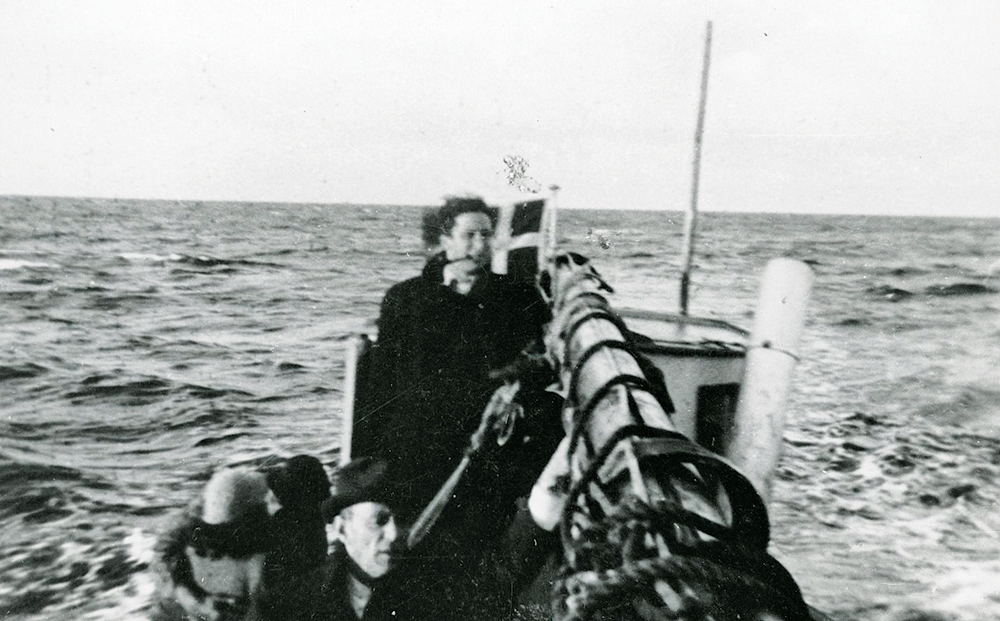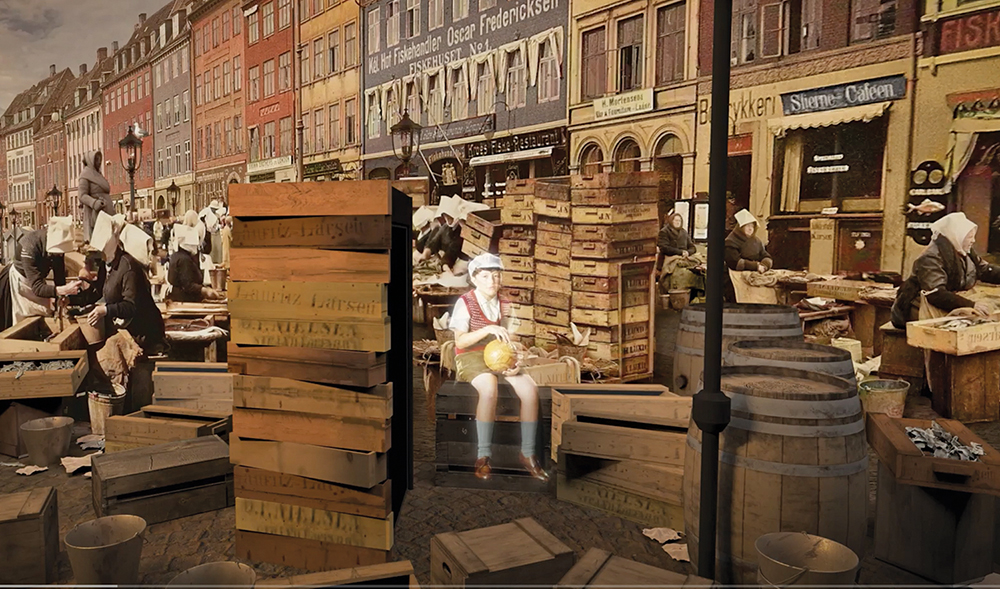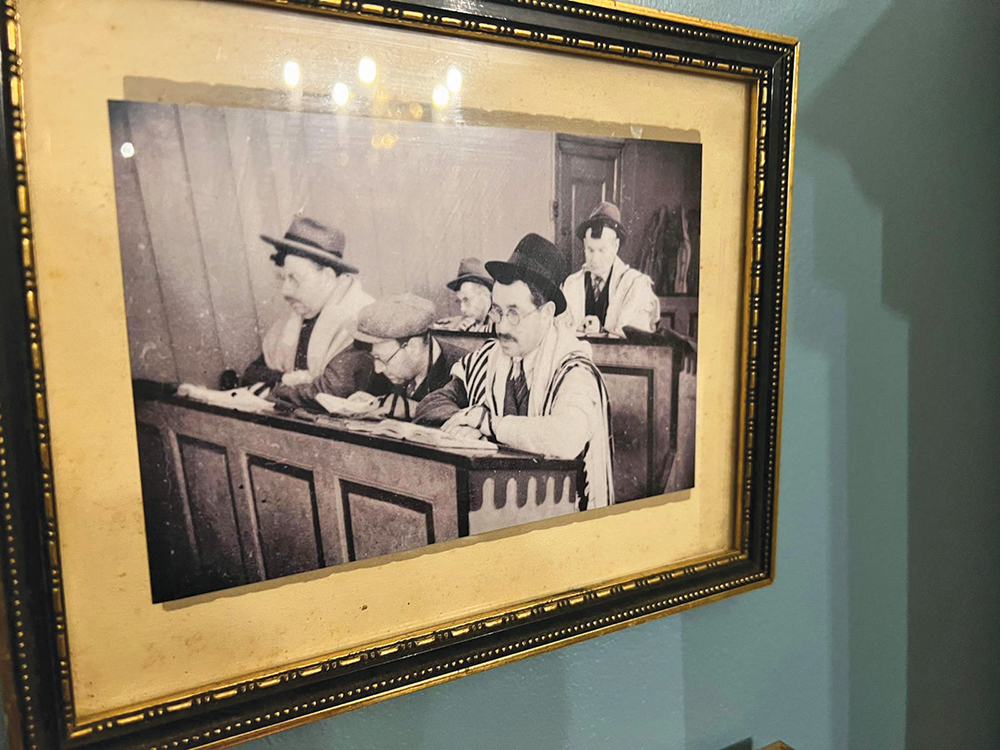
It’s been 78-plus years since the Holocaust, and once again, antisemitism has exponentially risen. Heaven Forbid that the current hostility to Jews should become pervasive and be met with indifference by world leaders, as it was then—except for some nations, whose kind citizens refused to abet Jewry’s enemies. The Museum of the Jewish Heritage’s new exhibit, Richard Kluger’s novel (discussed at a recent Museum event), and Jan Meyer’s testimony chronicle how Danes, at great personal risk, saved their country’s Jews.
The Museum’s Courage to Act: Rescue in Denmark celebrates “ordinary” Danes’ bravery during the Holocaust. Its installations include photographs, video, art, holograms, and archival materials. Although carefully designed for children nine and above, they equally engage adults, and showcase Denmark’s refusal to relinquish its Jews to the Nazis. There are multimedia “snapshots” of Jews and their non-Jewish countrymen in prewar, wartime, and postwar Denmark.
Interactive audio and video stations run throughout the exhibit. They feature “hologram” children living in occupied Denmark, who share their perspectives via recorded monologues. Two are Jews: Rebekha, 16, a Czech refugee, lives in the countryside and Max, 10, is a Danish born city-dweller. Erik, 14/15 is a non-Jewish Resistance member. Their coping strategies differ, but cope they do. Everyone can identify with Rebekha’s and Max’s concerns, and with Erik’s desire to assist his fellow Danes. The exhibit illustrates how life in Denmark under Nazism differed from occupation elsewhere.

Distinguishing Denmark’s Nazi Occupation From Those Of Continental Europe
Denmark is a small country, strategically located, with abundant minerals crucial to the Nazis, and a coastline that were advantageous to the German navy and Luftwaffe. Germany overwhelmed Denmark in six hours; from 1940-1943, the country “adjusted” to occupation, but for much of the war, Nazis restrictions on Danes’ freedom of movement and activities were limited.
Jews had lived peacefully for centuries among the majority Danish Lutherans; even under occupation, they didn’t wear yellow stars, nor were they “ghettoized,” and Denmark insisted that the Nazis could not terrorize or deport its Jews. Overt anti-Nazi opposition, such as sabotage and other violence, did not begin until 1943, when the Allies’ victory was all but assured. As the Resistance accelerated, danger for the Jews increased.
The Rescue Begins
The Resistance infuriated the Nazis, who, using community center lists, identified Jews, and planned to raid their homes on or around Rosh Hashana and ultimately, deport them. Danish rescuers sprang into action and alerted Jewish community leaders about the roundup. Jews packed minimal belongings and, on Erev Rosh Hashana, stayed with non-Jewish friends, neighbors, and strangers. Out of about 7000 Jews, the Nazis found about 500 elderly individuals at home, and deported them to Theresienstadt.
Those who escaped remained hidden in non-Jews’ homes and in hospitals until they embarked on fishing boats bound for Sweden, departing from various points, under the cover of night.

Honoring the Rescuers
The exhibit’s heroines include “average” Danes like Henny Sinding Sundo, whose father commanded the country’s Lighthouse and Buoy Service. The crew of lighthouse supply boat Gerda III sought her help to rescue Jews. Henny, then 22, guided Jews to the boat, where about 300 of them were ferried, in shifts, over weeks, to Sweden. Later, Gerda III helped between 600-700 Resistance fighters and downed Allied airmen escape to Sweden. The adjective extraordinary” best describes Danes’ courage, as illustrated in the Museum’s narrative and Richard Kluger’s new novel.
Hamlet’s Children, Kluger’s opus about the rescue, tracks the occupation and rescue through the eyes of Terry Sayre, an American-born non-Jewish teen, transplanted to a small Danish coastal town to live with his empathetic, anti-Nazi Mundt family. An Oct. 5, Museum-sponsored discussion between Pulitzer Prize winner Kluger and actress Juliana Margulies focused on his impeccable research and writing process. (https://www.youtube.com/watch?v=eWhIEu0DVjc). Jewish characters are introduced relatively early in Kluger’s novel, but their rescue transpires three years after occupation, as actually happened. Hamlet’s Children’s provides profound insights into Danes’ begrudging “tolerance” of occupation, how they channeled their anger into often subtle but effective anti-Nazi actions, and how that morphed into open resistance and rescue.
These themes were personalized by Teaneck resident Jan Meyer in a recent Kristallnacht presentation at Fair Lawn’s Shomrei Torah and in an interview with this author.

A Personal Account of Danish Heroism
Denmark is an ocean plus away, but even in Teaneck, the rescue’s ripple effect is perceptible. Jan Meyer, only one “brief” generation removed from it, remains strongly connected to his Danish roots. He recalls his relatives’ flight to Sweden and postwar return there.
Meyer, born in Copenhagen, is a seventh-generation Dane on both sides. Matrilineally, his ancestors come from Germany, and he is a descendant of the Wurzberger Rav, Rav Yitzchak Dov Halevi Bamberger. His parents, who were not yet a couple, were among those rescued. They fled to Sweden in October 1943 and returned to Copenhagen after the war ended. His father, a member of the National Guard, helped to restore law and order in the liberated Denmark. His parents married in 1957 and he was raised there.
Like many Europeans, Meyer is multilingual. He attended university in Copenhagen, majoring in international business. As the Orthodox community declined, He and his peers left Denmark to secure a future as observant Jews. He travels across the continental U.S. for his Teaneck-based law firm but visits the Jewish community in Denmark frequently. He is active in Teaneck civil life, volunteers with its Ambulance Corps, and belongs to Congregations Rinat Yisrael and Bnai Yeshurun. At Shomrei Torah’s recent Kristallnacht commemoration, Meyer shared anecdotes about the rescue, and the respect that most non-Jews showed for Jewish property during the latter’s absence from Denmark.
One amazing story relates to his uncle and cousins, who resided in an apartment in Copenhagen, adjacent to the family’s small synagogue. The Nazis were unaware of this synagogue and his uncle’s family, as fortunately, they had not registered with the community center. Consequently, the Nazis did not look for them. Nevertheless, despite a table set for Rosh Hashana and food preparations underway, his uncle’s family also fled to Sweden.
After the war ended, his uncle’s family returned to Denmark and in their apartment, absolutely nothing had been touched. The loyal non-Jewish caretaker had made sure that the synagogue and apartment remained exactly as they had been. When the family arrived home, the table was still set for the holiday, and in a pot full of water and potatoes on the stove, set aside to cook for Rosh Hashana, a potato plant had sprouted.
In October of 2023, Chabad of Denmark organized a reenactment of the rescue. Elderly survivors, who as children were refugees to Sweden, and their family members were among the boat’s passengers. Meyer and his wife Suri sponsored the documentary of that journey (it’s not publicly available yet).

The ‘Long View’ of Danish Heroism and Ongoing Concern for Jewish Safety
The risks Danes took in implementing these rescue operations, and the potential consequences for them, have been commemorated even decades later. In 2013, Crown Prince Frederik visited Israel to honor the rescue’s 70th anniversary; on the 75th anniversary, former Israeli President Reuven Rivlin reciprocated with a state visit to express Israel’s thanks to Denmark.
Denmark continues to protect its Jews. The terror threat has risen over the last decade-plus, with attacks on both Jews and Jewish institutions. The war in Gaza has exacerbated this, such that police resources have been stretched thin trying to thwart terror attacks, Wienberg (Dec. 2) reports that Denmark’s armed forces have been called on to guard Jews and Jewish institutions, as well as government buildings (https://www.bloomberg.com/news/articles/2023-12-02/denmark-orders-military-to-defend-israeli-embassy-synagogues). Olsen and Grieshaber (Dec. 14) report that Danish authorities arrested suspects connected to a larger European-based terror network aiming to attack Jewish sites in Denmark, the Netherlands, and Germany (https://www.washingtonpost.com/world/2023/12/14/denmark-terror-arrests-suspicion/6ce4bff8-9a66-11ee-82d9-be1b5ea041ab_story.html).
We can only hope that Denmark’s ongoing protection of Jews will be replicated by other nations, and that the courage of “extraordinary” individuals in an “extraordinary” nation will be remembered with gratitude for years to come.
Note: The Museum’s recorded interview with Danish survivor Tove Bamberger is also available (https://www.youtube.com/watch?v=zg1nzkVQzxI).
Rachel Kovacs, PhD, who teaches communication at CUNY and Judaics locally, is also a PR professional, freelance writer, and theater reviewer for offoffonline.com. She trained in performance at Brandeis and Manchester Universities, Sharon Playhouse, and the American Academy of Dramatic Arts. She can be reached at [email protected].












